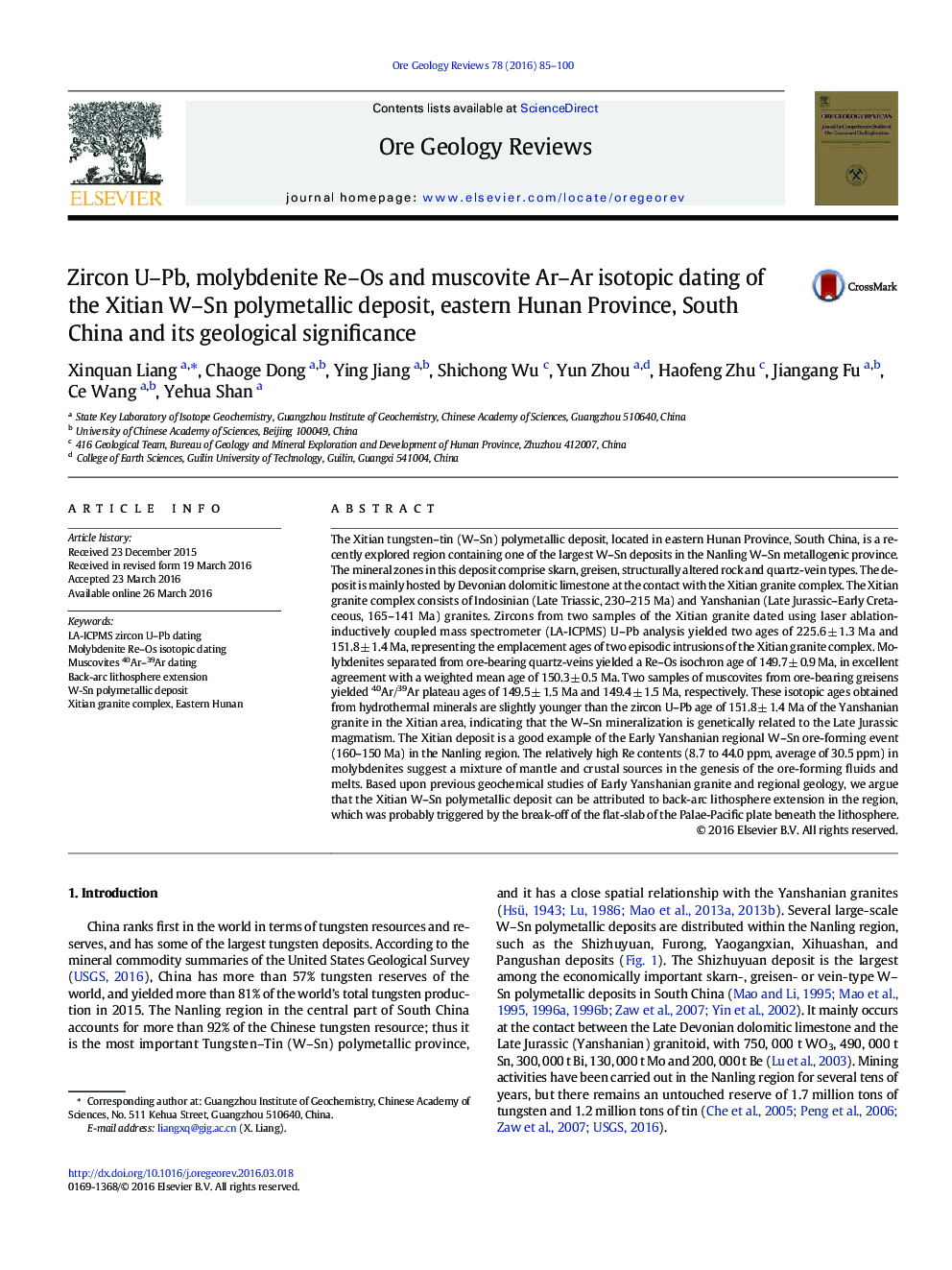| کد مقاله | کد نشریه | سال انتشار | مقاله انگلیسی | نسخه تمام متن |
|---|---|---|---|---|
| 4696841 | 1637228 | 2016 | 16 صفحه PDF | دانلود رایگان |

• U–Pb, Re–Os and Ar–Ar dating are systematically used to constrain the magmatism and W–Sn mineralization in the Xitian W–Sn deposit.
• All published ages from various styles of W–Sn deposits in the Nanling region at 160–150 Ma are collected.
• Jurassic magmatism and mineralization are linked to back–arc lithospheric extension in the Nanling region, possibly triggered by a flat–slab subduction of Paleo–Pacific plate.
• High Re contents in molybdenite suggest that the ore–forming components were from mixed mantle and crustal sources.
The Xitian tungsten–tin (W–Sn) polymetallic deposit, located in eastern Hunan Province, South China, is a recently explored region containing one of the largest W–Sn deposits in the Nanling W–Sn metallogenic province. The mineral zones in this deposit comprise skarn, greisen, structurally altered rock and quartz-vein types. The deposit is mainly hosted by Devonian dolomitic limestone at the contact with the Xitian granite complex. The Xitian granite complex consists of Indosinian (Late Triassic, 230–215 Ma) and Yanshanian (Late Jurassic–Early Cretaceous, 165–141 Ma) granites. Zircons from two samples of the Xitian granite dated using laser ablation-inductively coupled mass spectrometer (LA-ICPMS) U–Pb analysis yielded two ages of 225.6 ± 1.3 Ma and 151.8 ± 1.4 Ma, representing the emplacement ages of two episodic intrusions of the Xitian granite complex. Molybdenites separated from ore-bearing quartz-veins yielded a Re–Os isochron age of 149.7 ± 0.9 Ma, in excellent agreement with a weighted mean age of 150.3 ± 0.5 Ma. Two samples of muscovites from ore-bearing greisens yielded 40Ar/39Ar plateau ages of 149.5 ± 1.5 Ma and 149.4 ± 1.5 Ma, respectively. These isotopic ages obtained from hydrothermal minerals are slightly younger than the zircon U–Pb age of 151.8 ± 1.4 Ma of the Yanshanian granite in the Xitian area, indicating that the W–Sn mineralization is genetically related to the Late Jurassic magmatism. The Xitian deposit is a good example of the Early Yanshanian regional W–Sn ore-forming event (160–150 Ma) in the Nanling region. The relatively high Re contents (8.7 to 44.0 ppm, average of 30.5 ppm) in molybdenites suggest a mixture of mantle and crustal sources in the genesis of the ore-forming fluids and melts. Based upon previous geochemical studies of Early Yanshanian granite and regional geology, we argue that the Xitian W–Sn polymetallic deposit can be attributed to back-arc lithosphere extension in the region, which was probably triggered by the break-off of the flat-slab of the Palae-Pacific plate beneath the lithosphere.
Graphical AbstractFigure optionsDownload as PowerPoint slide
Journal: Ore Geology Reviews - Volume 78, October 2016, Pages 85–100